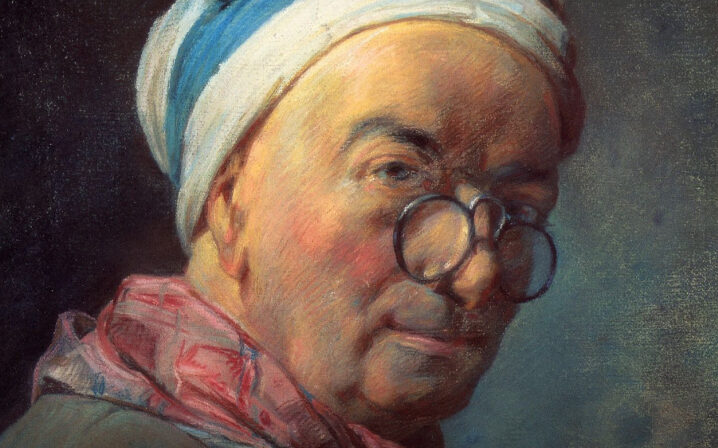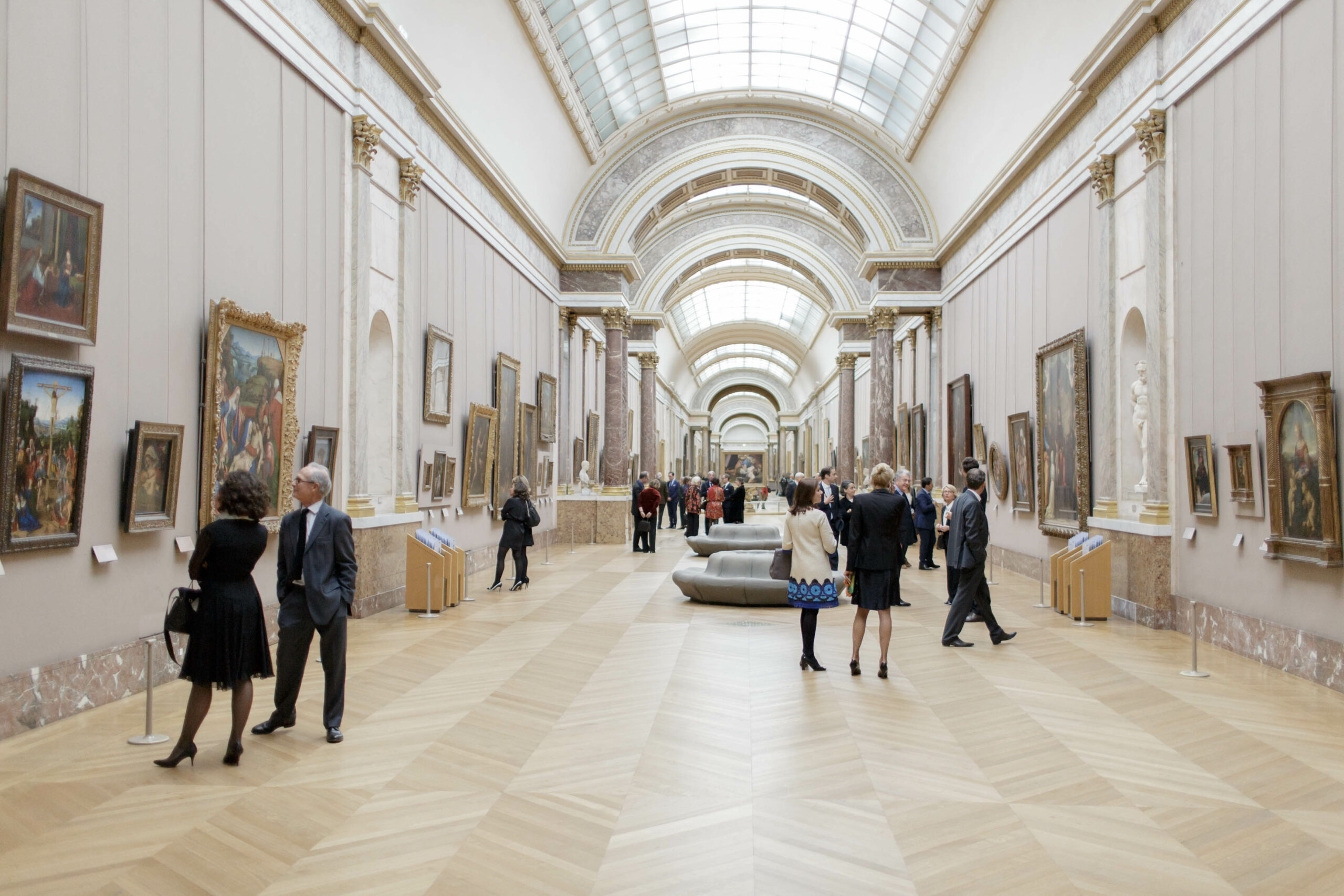BASKET OF STRAWBERRIES
(38 X 46.5 CM)
BASKET OF STRAWBERRIES
A major work of French painting, Basket of Strawberries is considered the quintessence of Jean Siméon Chardin’s art. It shows all the painter’s mastery through a refined composition and a striking colour harmony. Immerse yourself in this celebration of the senses!
FIRST OF ALL, A QUESTION:
THE PYRAMID OF STRAWBERRIES
782 might be the number of strawberries in this basket... The strawberries Chardin depicted on this canvas are unique among the painter’s subjects. As it happens, Chardin, admitted to the Académie Royale de Peinture et de Sculpture as a painter ‘of talent for animals and fruits’, never represented strawberries either before or after this 1761 painting. The subject, much treated by 17th-century still life painters, had indeed been more or less abandoned in Chardin’s time. The artist was visibly inspired by the challenge of representing this singular pyramid, of an intense red, as both a compact mass and a fragile edifice composed of a multitude of slightly conical, unstable little elements.
THE GLASS OF WATER
The glass of water was a fairly constant motif in Chardin’s works from the very beginning, through which the painter addressed the representation of transparency. During the 1750s, the artist achieved a remarkable mastery in this domain by adopting a slightly fluted type of glass tumbler that subtly diffracted the light. Chardin surpassed himself in the Basket of Strawberries, where the dense but transparent volume of the glass of water counterbalances the fragile monument of berries.
THE CARNATIONS
The carnations were one of the bravura effects that aroused the Goncourts’ admiration: ‘Look at those two carnations: mere chips of white and blue, a scattering of silvery accents in relief; step back a little; the flowers rise from the canvas as you draw away’. Chardin had seldom represented this variety of flower before, with the exception of another masterpiece, Bouquet of Carnations, Tuberoses and Sweetpeas in a Porcelain Vase (about 1760, Edinburgh, National Gallery of Scotland).
THE BASKET
In the Basket of Strawberries, Chardin amused himself by suggesting the subtle crumpling of dazzling white petals against a brown background of wickerwork. The humble basket is not as ostentatious as a precious porcelain vase. In this way, Chardin accentuates our perception of the evanescent delicateness of these two freshly cut flowers.
THE PEACH AND THE CHERRIES
The two cherries and the peach are fruits that appear quite frequently in Chardin’s later still lifes. They evoke the ripeness of summer. Their distinct spherical volumes, some full and glossy, others velvety and cleft, provide the painter with the boon of variation. They parse the chromatic values of the painting’s central motif: the cherries’ varnished red corresponds to the more matte red of the strawberries; the yellow-mottled orange of the peach picks up the blond tone of the wicker basket.
"WE LEARNED FROM CHARDIN THAT A PEAR IS AS LIVING AS A WOMAN, A COMMON CROCK AS BEAUTIFUL AS A GEM"
WE NEED YOUR HELP TO KEEP THIS PAINTING IN FRANCE


